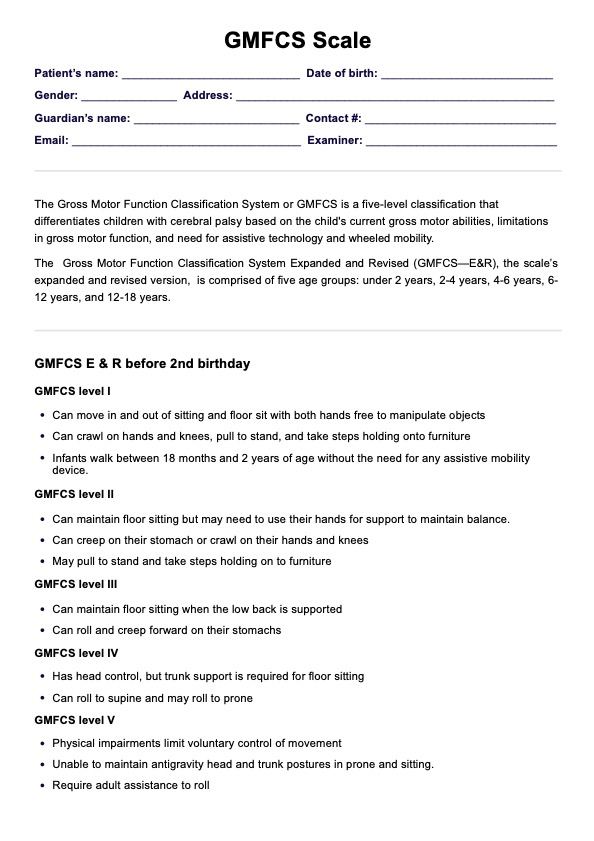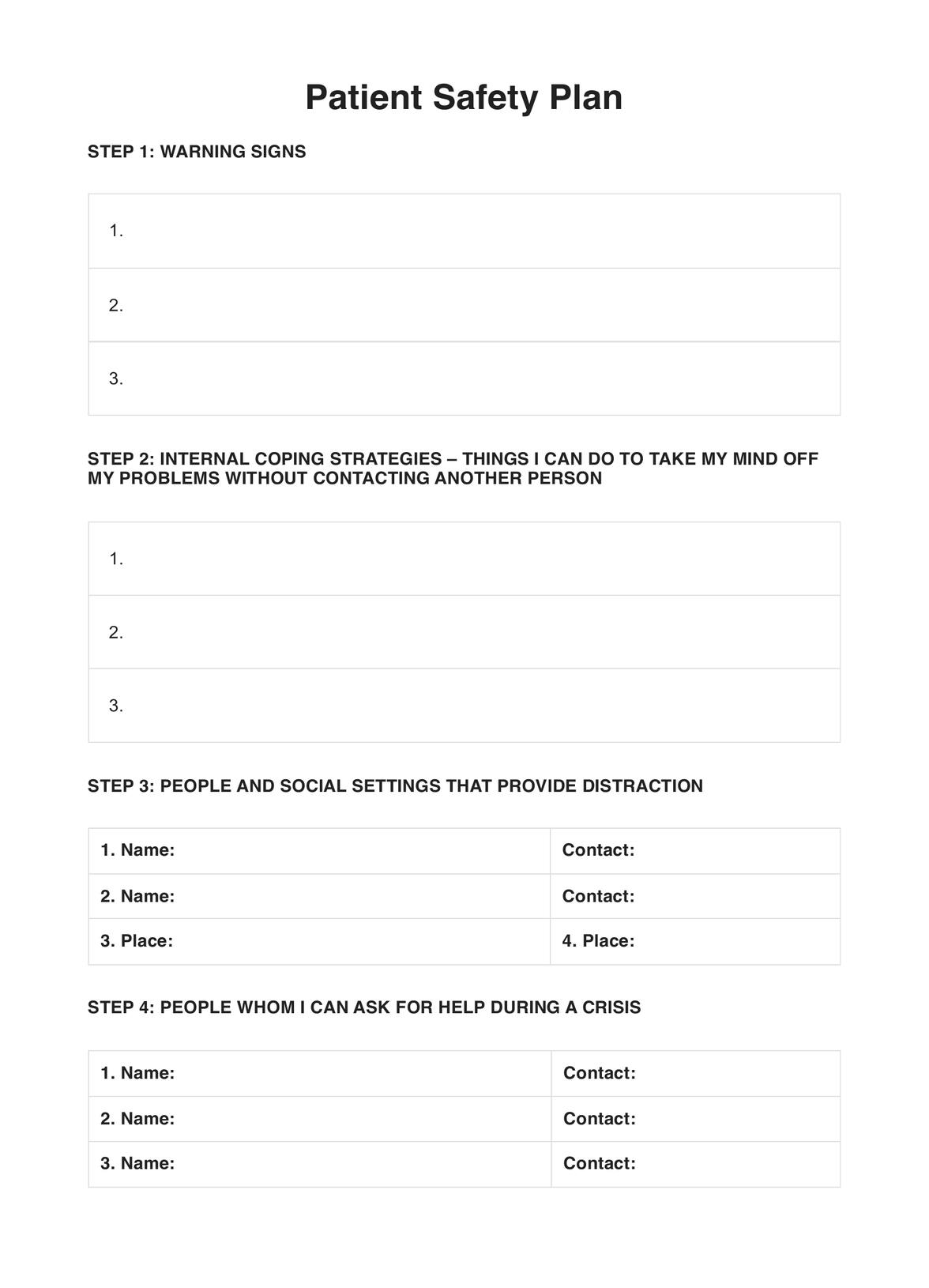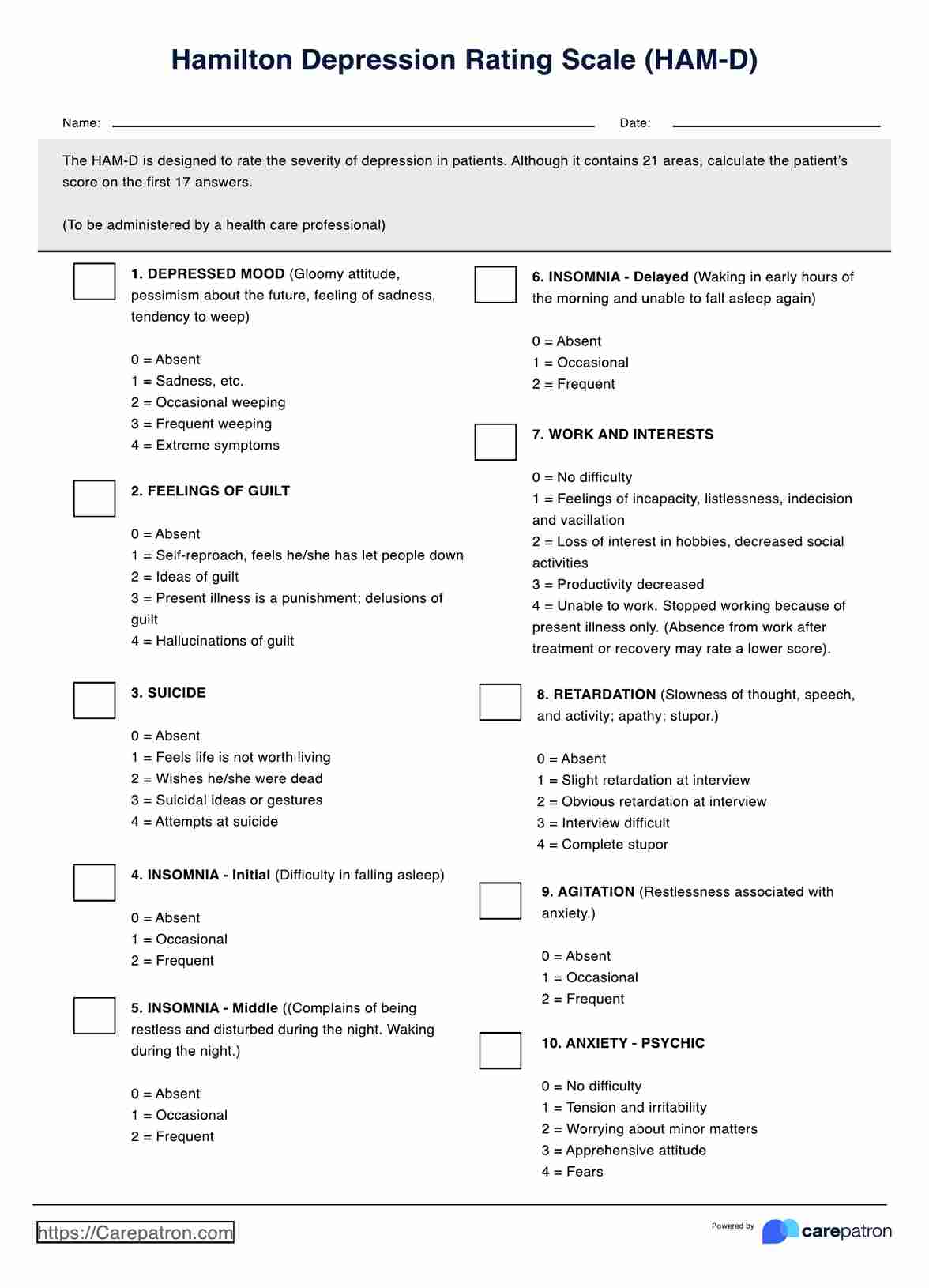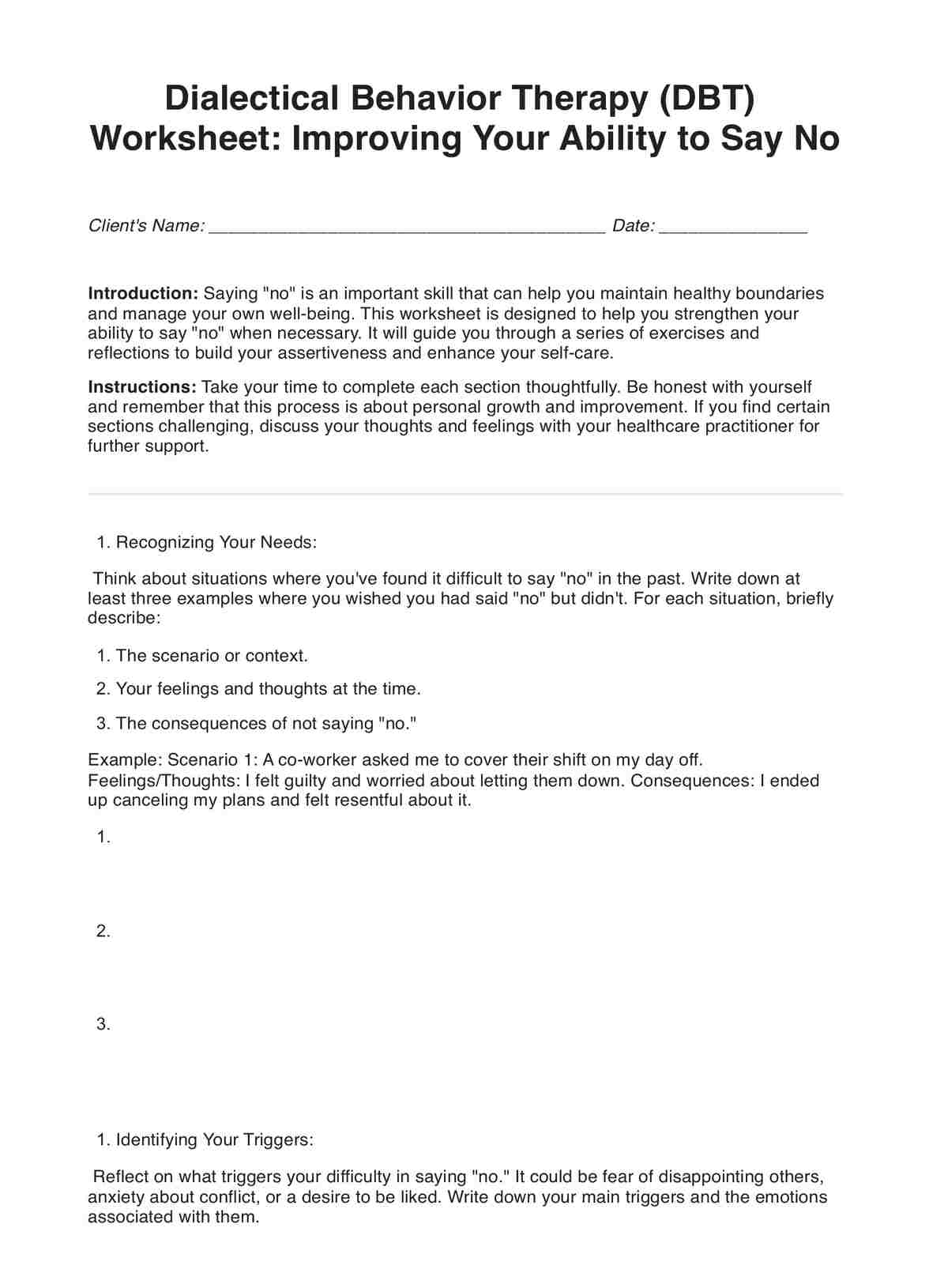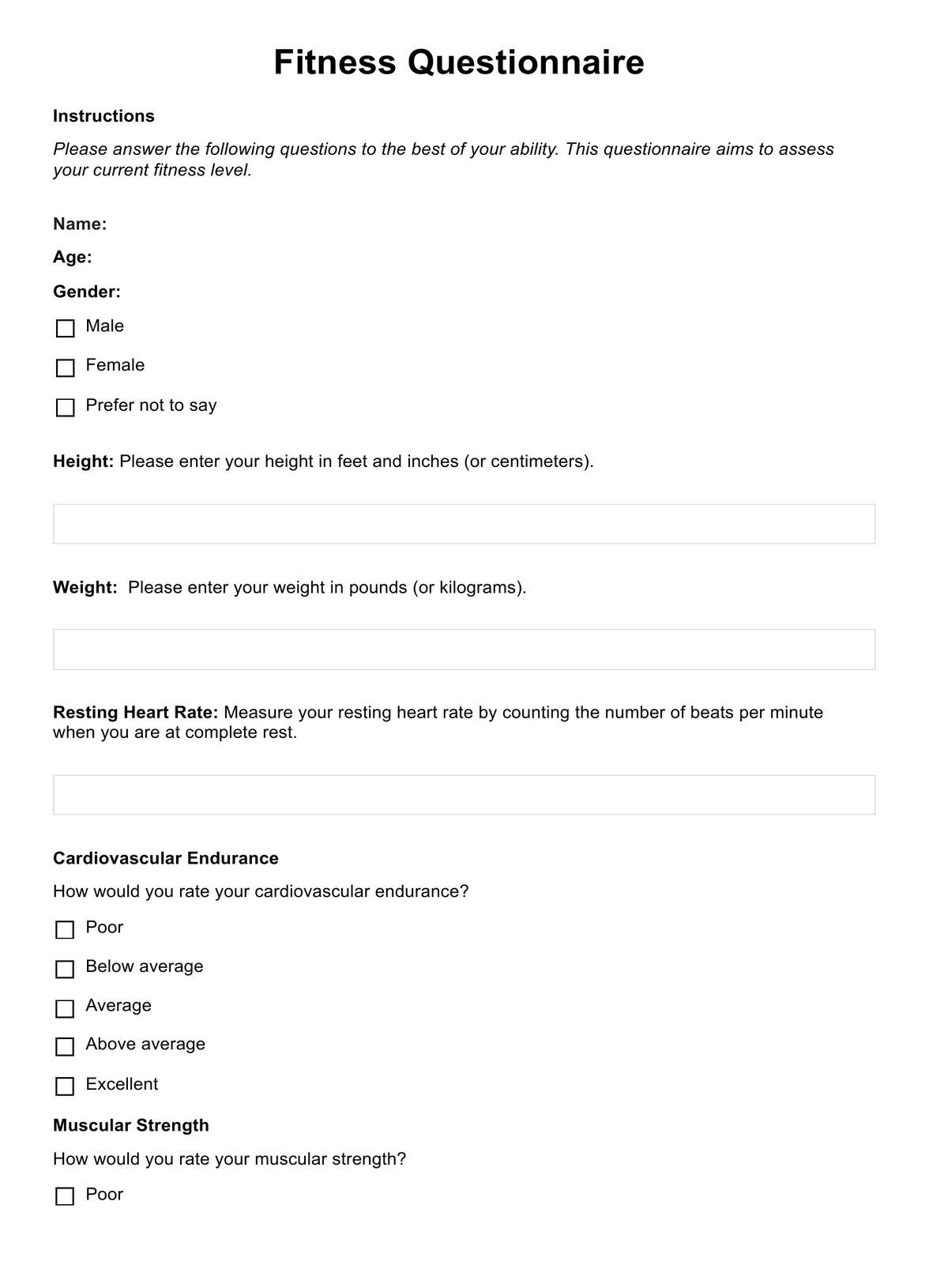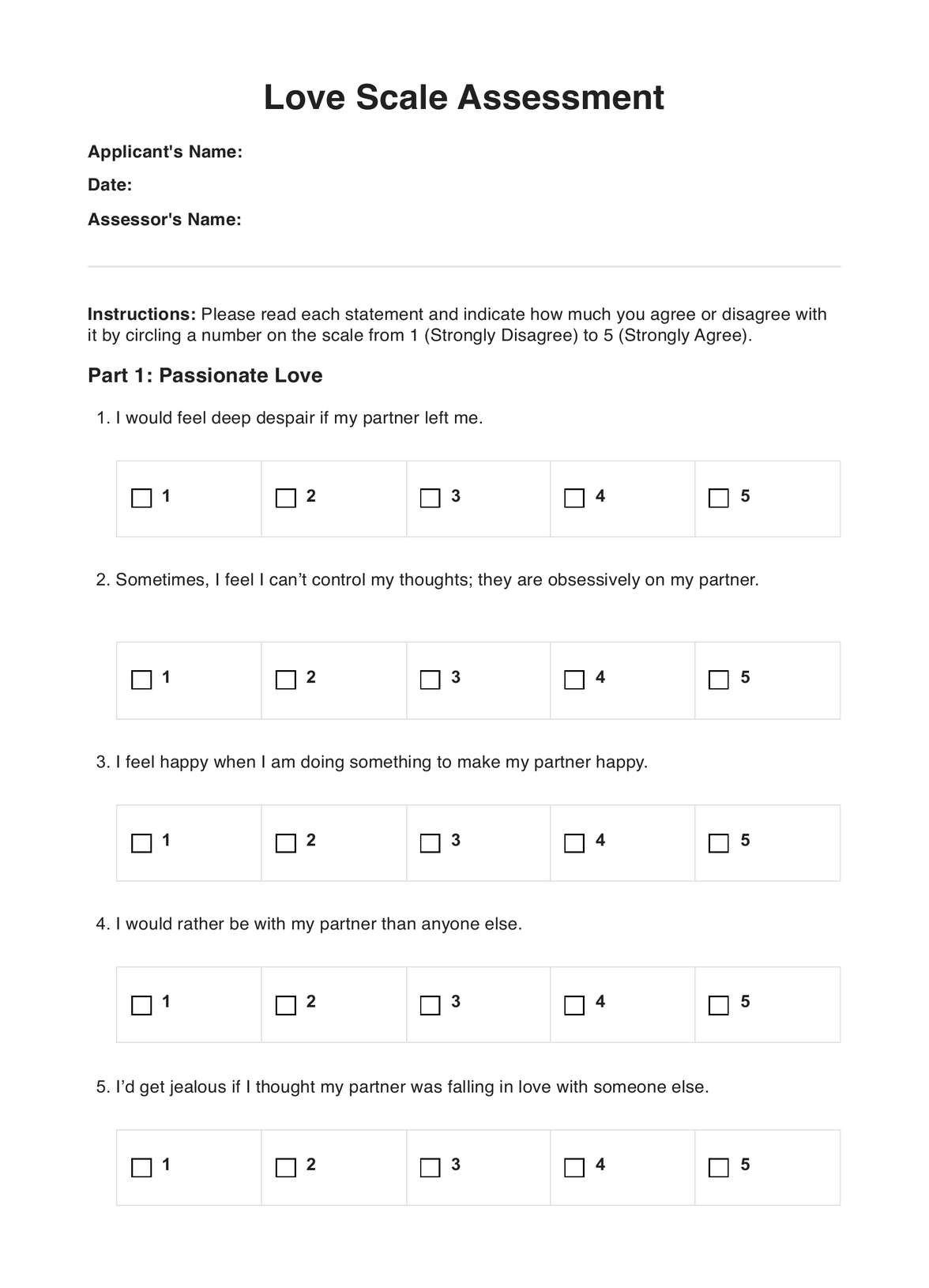Primary and Secondary Emotions Worksheet
Download our free Primary and Secondary Emotions Worksheet to aid clients in exploring their emotional experiences and fostering emotional resilience.


Introduction to primary and secondary emotions
Primary emotions constitute the fundamental building blocks of our emotional experiences, representing innate and instinctual responses to various stimuli, physical sensations, or events encountered in our daily lives. These emotions are characterized by immediacy and authenticity, often emerging rapidly and reflexively in reaction to specific triggers or events.
These emotions encompass and describe basic feelings, such as joy, sadness, anger, fear, and disgust, which serve as primal indicators of our internal states and external circumstances. They form the raw material from which more complex emotional responses evolve, providing crucial insight into our immediate reactions and underlying dynamic landscape.
Secondary emotions represent the multifaceted and nuanced emotional responses that emerge after primary emotions or as a result of cognitive appraisal and interpretation of life events.
Secondary emotions are complex and layered, Unlike primary ones, which arise spontaneously and instinctively. They often involve cognitive processes such as reflection, interpretation, and evaluation of the initial emotional experience.
Secondary emotions may include guilt, shame, jealousy, or resentment. They arise from processing and contextualizing primary emotional responses within the framework of individual beliefs, values, and social norms. They serve as more profound reflections of our internal state and interpersonal dynamics, offering insights into the complexities of human emotion regulation and social interaction.
The critical distinction between primary and secondary emotions is their origins, characteristics, and underlying processes. Primary emotions are immediate and instinctual reactions that respond to internal or external stimuli, representing primal indicators of our emotional state. In contrast, secondary emotions are more complex and arise from the cognitive appraisal and interpretation of primary emotional experiences or external events.
Primary and Secondary Emotions Worksheet Template
Primary and Secondary Emotions Worksheet Example
How does our Primary and Secondary Emotions Worksheet template work?
Help your patients achieve heightened self-awareness and emotional intelligence by following these five steps:
Step 1: Introduction to the worksheet
Begin by obtaining a copy of the Primary and Secondary Emotions Worksheet PDF by clicking the "Use Template" or "Download" button. Then, introduce the worksheet to the individual, explaining its purpose in exploring and understanding emotional experiences. Emphasize the importance of self-reflection and awareness in managing negative emotions more effectively.
Step 2: Identify and analyze triggers and responses
First, assist the individual in identifying triggers or stimuli that led to their overwhelming emotions and emotional responses. You may explore internal and external reactions to these triggers, including thoughts, feelings expressing emotions, and behavioral responses.
Step 3: Identify primary emotions and any thoughts/interpretations on them
Encourage the individual to reflect on recent events or situations that elicited strong emotional responses. Prompt them to identify the initial primary emotions they experienced in response to these events and any thoughts/interpretations on them.
Step 4: Identity secondary emotions
Guide the individual in delving deeper into their emotional experiences by examining secondary emotions that may have emerged after the initial primary response. Encourage reflection on the underlying reasons and triggers for these secondary emotions, considering factors such as cognitive appraisal and interpretation of events.
Step 5: Develop strategies for emotional regulation
Collaborate with the individual to develop practical strategies for regulating and managing their emotional responses in similar situations in the future. Encourage exploring coping mechanisms, mindfulness practices, communication strategies, and other tools for using painful emotions and enhancing emotional resilience and self-awareness for better emotional management and reduced emotional dysregulation or vulnerability.
Benefits of using this worksheet
The Primary and Secondary Emotions Worksheet is a powerful tool for helping your patients, especially those diagnosed with borderline personality disorder, gain deeper insight into their emotional landscape. Engaging with it can have several key benefits, such as the following:
Uncover hidden layers of emotions
The worksheet prompts your patient to reflect on primary (initial) and secondary (reactive) emotions. This process helps them discover the complex dynamics at play in their emotional experiences. Additionally, it can help develop interpersonal effectiveness skills by incorporating techniques like assertiveness training, active listening, and conflict resolution.
Boost emotional awareness
Exploring one's primary and secondary emotions through the worksheet increases one's sensitivity to one's body and emotional responses and improves one's emotion regulation skills. One will become attuned to the factors influencing them, whether internal thought processes or external stimuli. This newfound self-awareness empowers one to manage one's negative and positive emotions effectively in different situations.
Make informed decisions about well-being
By recognizing and articulating one's emotional experiences, one can gain clarity about one's thoughts, feelings, and behavioral patterns. The worksheet empowers one to make informed decisions about one's emotional well-being. Knowing one's dynamic landscape allows one to choose healthier coping mechanisms for intense emotions and prioritize strategies that promote emotional balance, thus reducing emotional suffering caused by unmanaged strong emotions.
Therapist techniques for emotional processing
Beyond using worksheets, therapists have a toolbox filled with techniques to help clients process painful feelings. Here are some key strategies:
- Creating a safe space: Creating a safe space can significantly improve interpersonal relationships by fostering understanding and empathy, essential for building and maintaining meaningful connections.
- Equipping with skills: Therapists educate clients on emotional regulation techniques like mindfulness practices, relaxation techniques, and CBT strategies. These tools empower clients to manage difficult emotions and build resilience.
- Mindfulness for awareness: Mindfulness exercises cultivate present-moment awareness and non-judgmental acceptance of emotions. This helps clients gain self-awareness, regulate emotions more effectively, and develop self-compassion.
- Reshaping thoughts: Cognitive-behavioral interventions help clients identify and challenge negative thought patterns contributing to emotional distress. By restructuring these patterns and developing healthier coping mechanisms, clients learn to manage their emotions more adaptively.
- Building a therapeutic alliance: Therapists create a safe and supportive environment built on trust, empathy, and compassion. This therapeutic alliance empowers clients to feel heard and understood, fostering emotional growth and healing.
You can use an Emotions Worksheet template as a practical tool often used in Dialectical Behavioral Therapy to help identify, label, and understand your emotions. This worksheet typically includes sections for recording the specific emotions experienced, noting their intensity, and recognizing any triggers or situations that contributed to these feelings.
Commonly asked questions
Primary emotions include joy, sadness, anger, fear, and disgust. These are considered the fundamental and instinctual responses to various stimuli.
Yes, primary emotions can evolve into secondary emotions. For example, feeling the initial joy of receiving a new toy can turn into secondary emotions like sadness or frustration if the toy breaks.
Individuals can identify their primary emotions by reflecting on recent events or situations that elicited strong emotional responses. Prompting them to recognize immediate feelings such as joy, sadness, anger, fear, or disgust helps identify primary emotions.


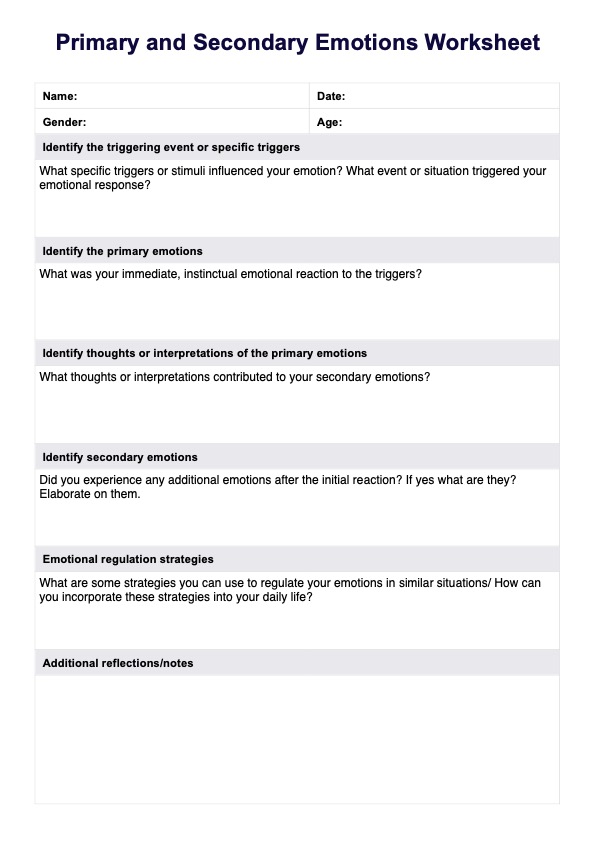
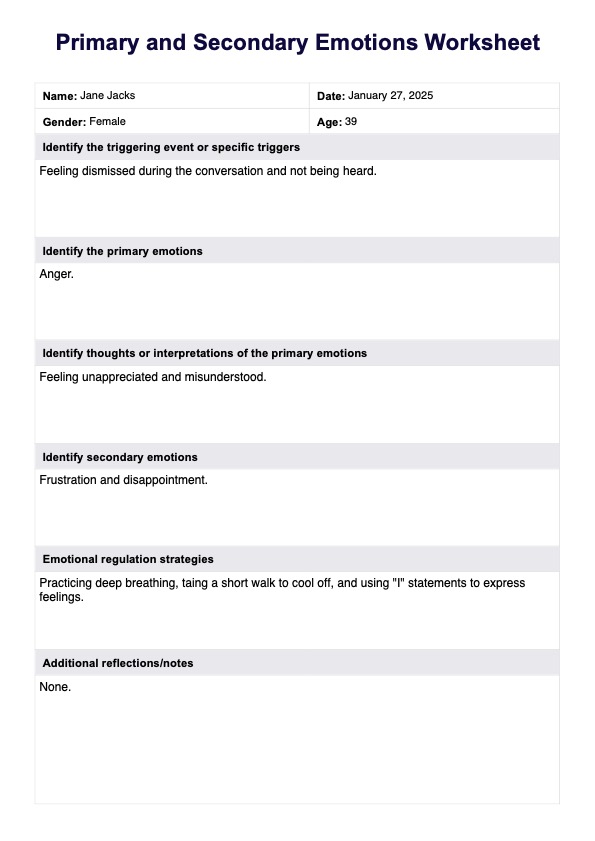

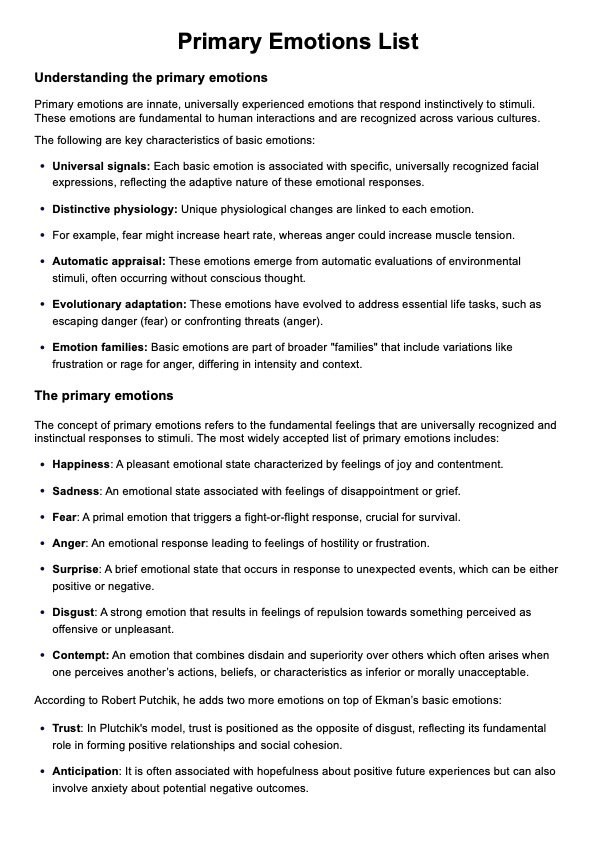
















-template.jpg)



















































































